As we enter the last stretches of the first playable release, we got to work on sound effects. We've been working on the game for so long, that you don't really have a clue on how the first impression of the game feels anymore. Then you turn on the SFX, everything comes alive and you rediscover your own game. :)
The video shows part of our first batch of sfx, created by Taylor Shechet. We focused initially on station and ship "drones", the kind background rumbling you expect to hear on space ships. To add some flavor to this, we added contextual sounds, so different stations sound different according to their function.
SFX
Here's what Taylor has to say about his work:
Although I'm a big science fiction fan I did some research on space sounds before I started working on sounds for DSS. I watched many interviews and documentaries about Ben Burtt, a key sound designer for Star Wars, WALL-E, Star Trek: Into Darkness, and many other classic films. I also listened to just about every variation of Star Trek background ambiance on Youtube, as Mathias cited those as an example of the direction desired for Deep Space Settlement.
There were some mental challenges to wrap my head around before starting the sounds for DSS. "There is no sound in space" is a bit of a doozie, because it makes it more tricky to imagine how sounds should resonate. Completely dry sounds don't sound very big or impressive, but I didn't want to confuse listeners with spatial cues that didn't make any sense. To avoid this, I mainly used plate and spring reverb sounds, which have less spatial cues and don't really describe a physical space to the brain as much. The sounds needed to be mono for implementation in the 3D space of the game, and since Stephanie is building the game engine from scratch, I wasn't sure what kind of DSP sound effects would be present, if any.
My first set of sounds were mostly rejected for being too scary sounding. I had been working on several horror game sound design projects with GRYPT and my idea of what sounded "mysterious" versus "terrifying" might have been a little off. Also, I initially imagined the space station sounds as if you were floating outside the space station but after some feedback from Mathias they were re-imagined to sound more as if you were standing IN the station itself. With the feedback in mind, I embarked on a quest to create the perfect space station background hum, with Star Trek's ambiances as my model.
To create a tool kit of layers that I could modify for slight variations for each station, I broke the sound down into hums, noise, and rumbles. First I made an "infrasonic" layer to provide the super deep bass, using a sine from my Arturia Minibrute and Waves MaxxBass to make harmonic overtones suggesting a deeper tone. A more audible and dynamic low rumble layer added punch and movement. I then thickened things out with a white noise layer and a number of hums, which varied depending on the station.
The contextual sounds varied for each station, but a lot of the sounds I used for various machine, robot, and airlock sounds were sampled from small motors like an electric toothbrush and then pitch-shifted to sound heavier. Most of the voices came from old radio recordings, which were then manipulated heavily to be less intelligible. I used my Arturia Minibrute to create a lot of the beeps and boops. My favorite stations to create sounds for were the Refinery, Shipyard and Trade Stations. The lava bubbling, steam, and metal groaning sounds in the Refinery were synthesized with the Zebra 2 synthesizer. The lava bubbling in particular was a happy accident that I stumbled on when flipping through presets. I love the weird unreal-reality of synthesized sound effects, and I think they work especially well for sounds that are full of motion like liquids. The Shipyard was fun because like the Factory, I had to create a lot of robot and manufacturing sounds, but with the Shipyard it was easier to imagine a specific sound narrative and mix the robot sounds with airlocks and the rumble of ship engines. The Trade station(not yet shown) is full of aliens of every imaginable shape and size from every corner of the universe! Recreating the babble of a giant marketplace and filling it with lots of different alien voices was a blast. There are some ship flyby sounds in there and I tried to make them varied to indicate the alien engine technology.
I had decided early on that I wanted my energy weapon sounds to be unique and different from the classic "pew pew" and phaser beam sounds, so that was very important to me. There are a number of different energy weapons in DSS, and they each needed to have a unique sound. I wanted the energy weapons to sound really biting and visceral but not too annoying in case there were several happening at once. Most of the energy sounds were created by combining notes from multiple patches on various synthesizers with some sampled sounds of concrete saws. Creating the sound for the D9 laser, the most powerful weapon in the game (that I know of), was a lot of fun. Part of the sound is made from a chord played on a mellotron choir, which gives the sound a "heavens parting" feeling. It's been truly amazing working on a project as inspiring and epic in scale as Deep Space Settlement. The detailed features of each space station suggested many sound possibilities, and I drew a lot of inspiration from looking at the game art Mathias sent me. I'd like to offer a heartfelt thank you to Stephanie, Mathias and all the people supporting DSS. It's amazing to see and hear the game coming together and I can't wait to play it!
PROGRAMMING
On the programing front, Stephanie has been working on the SFX and graphics engines and a bit on the scanning gameplay:
A space game without sound might be realistic but surely won't feel alive. We had very basic sounds until recently which were a bit silly if you ask me. Not only the sounds themselves, but the engine features that handled 3D sound were limited. Now there's proper distance fade, 3D panning and doppler shift as well as more professional sound assets. All that makes the game feel much more alive than before.
The graphics engine is probably the most complex module besides the game simulation. There's a lot of work, that went into this and much more to come. The latest addition is a way to access the rendering pipeline from the Mod API. Which means any mod can render using any mesh, texture or shader they fancy. I'm also working on a VFX system that should, in time, give more possibilities and power to Mathias and future modders. As of now, I'm laying down the foundation of this new system in order to get a proper visual effect for scanning gameplay.
The idea behind scanning, or active scanning, is to emit radiation and listen for a reflection off any object of interest. Much like a sonar or Pulse-Doppler radar used for weather surveillance but on a much grander scale. The player will order a ship equipped with such device to emit a pulse. When the pulse hit an object, depending on how that object reflects or absorbs the radiation band, it may be identified. Active scanning is a complement to passive scanning which does not require a pulse to be emitted but is less effective. Active scanning may also reveal stealthy craft, if they do not absorb the radiation properly.
GRAPHICS
And finally, there's been some progress on the AINexus asset, which is the enemy home base and as such the first non-human station Mathias is working on.
For now, we'll just share those WIP images and screenshots. When this is close this finished, we'll talk some more about why things look like they do, without spoiling too much of the story.
This is how things started out, simple block meshes.
Followed by a simple concept to plan out some of the features.
Highpoly model
Lowpoly model/UVs
In-game after normals have been baked:
And finally, this is the current state of things, with a few of the values blocked in:
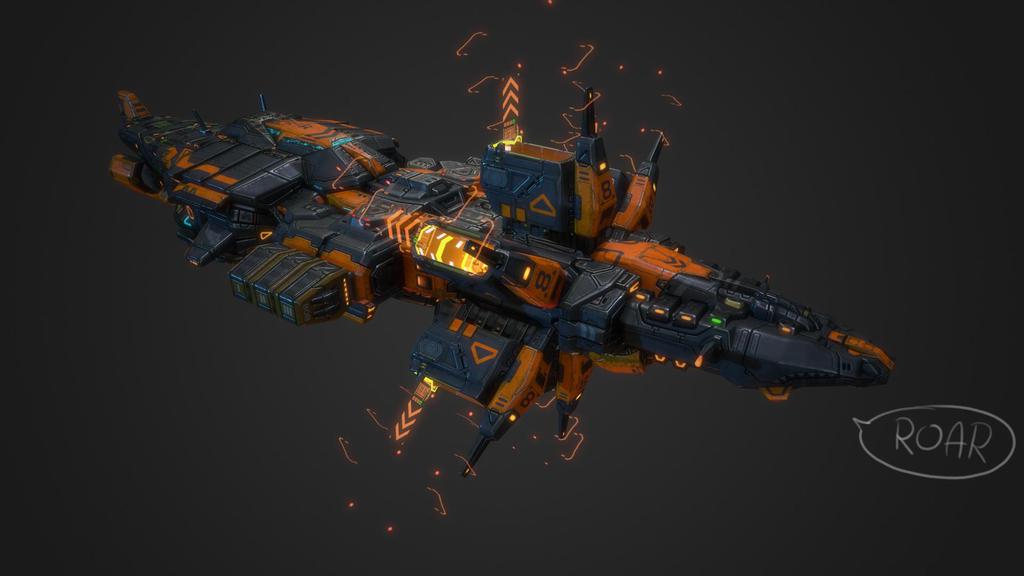
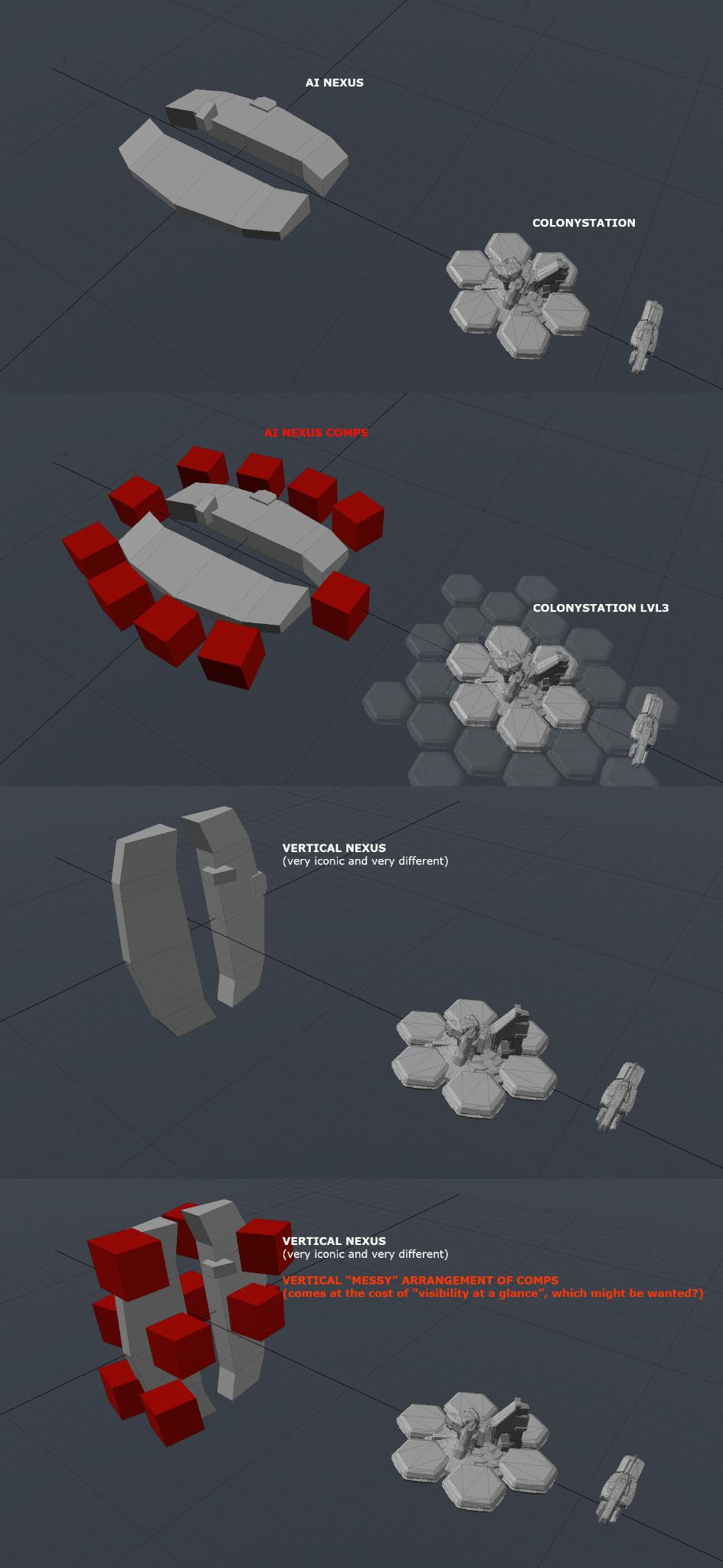
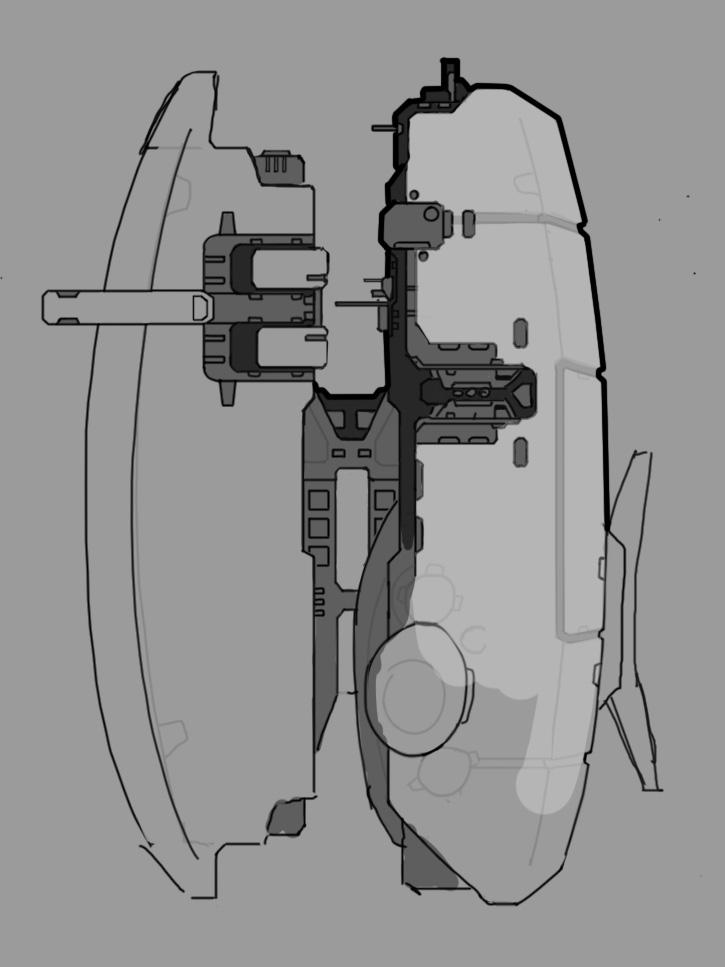
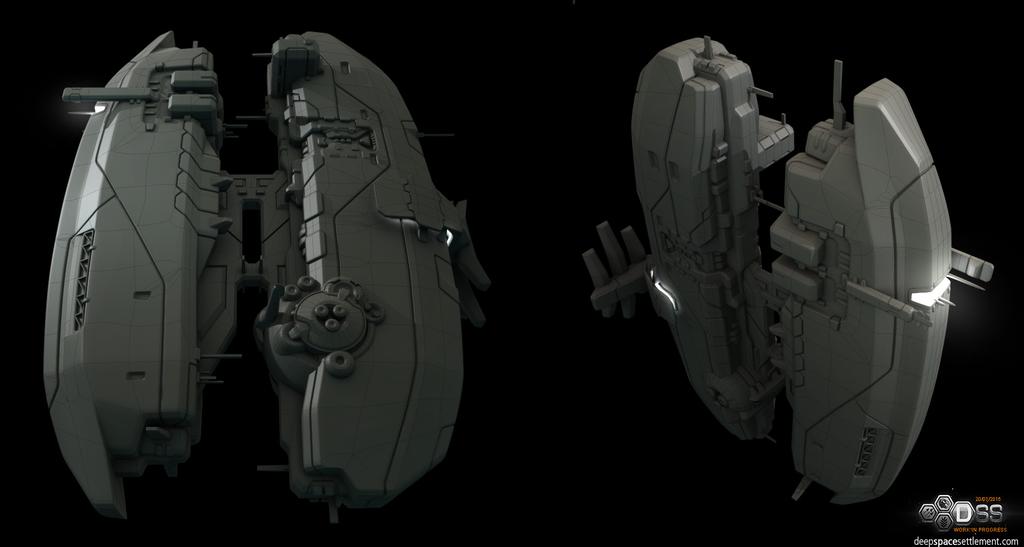
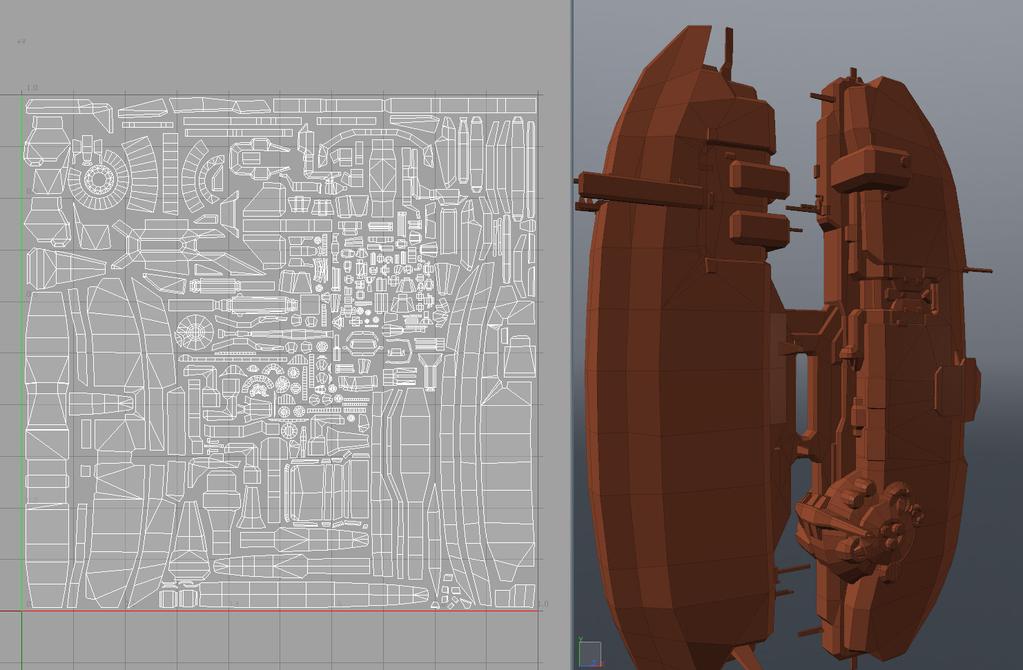
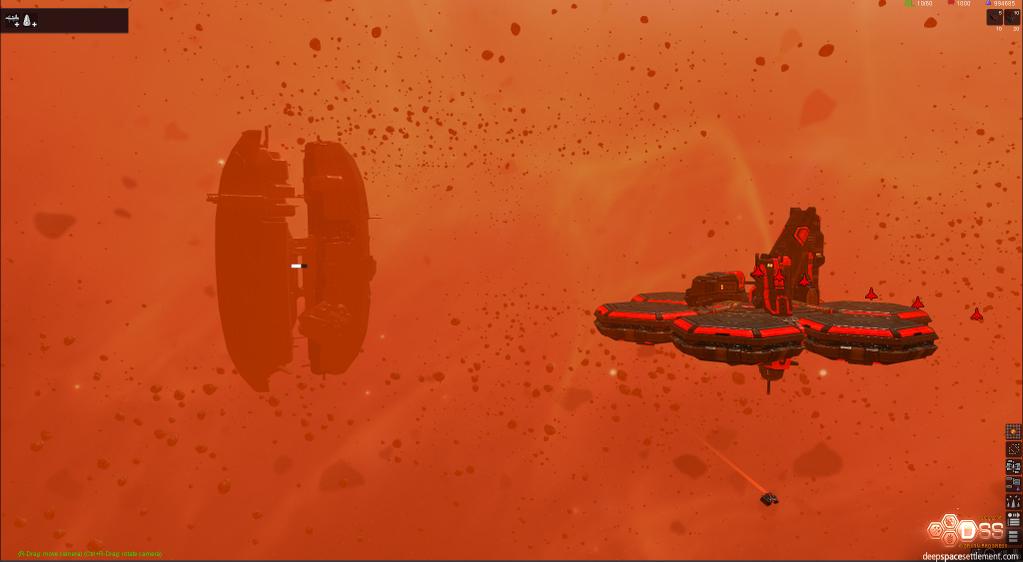
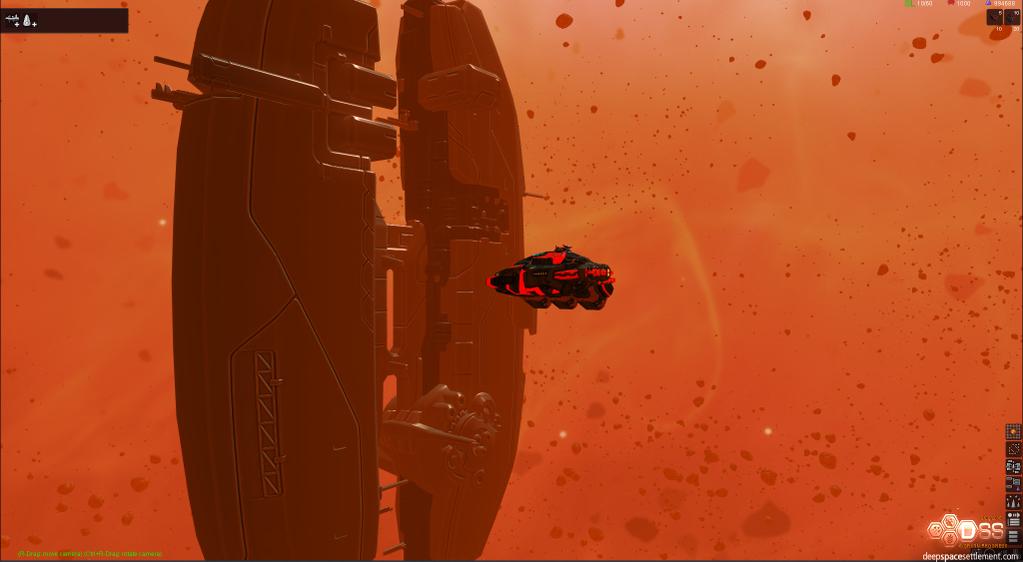

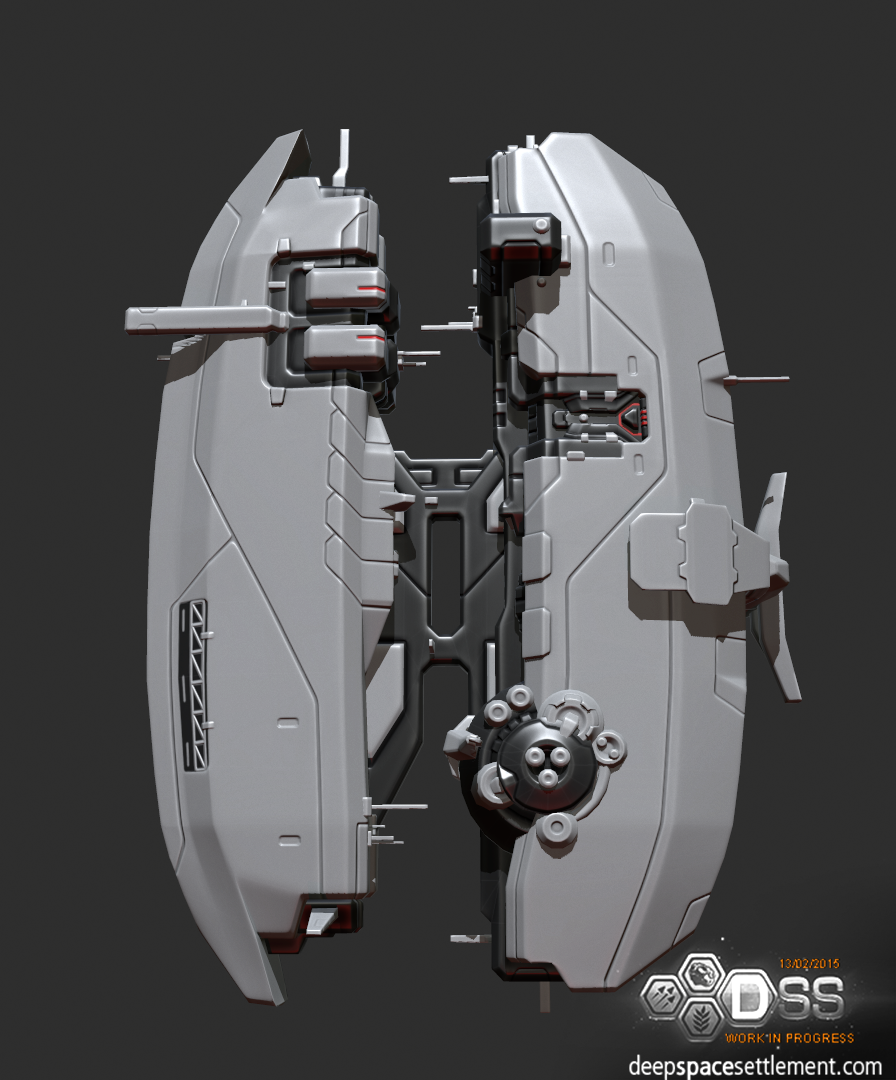


thats what I call a damn good render :D
More details on your plans for mod-ability please :D!
mod-ability is off the chart. The game relies on xml files for pretty much everything. Assets and game mechanics can be radically altered only by changing things in these files. And what can't be done in the xml files can be done through the game C++ API. That's where the mod-ability gets of the chart. Most of the game mechanics are already coded as if they were mod using the C++ API, the same that will be available to any programmer-wise modders. I think that's saying a lot about the possibilities. :D
That's fantastic to hear, thanks for sharing!, cant wait to show off what the community creates, modDB has you covered!